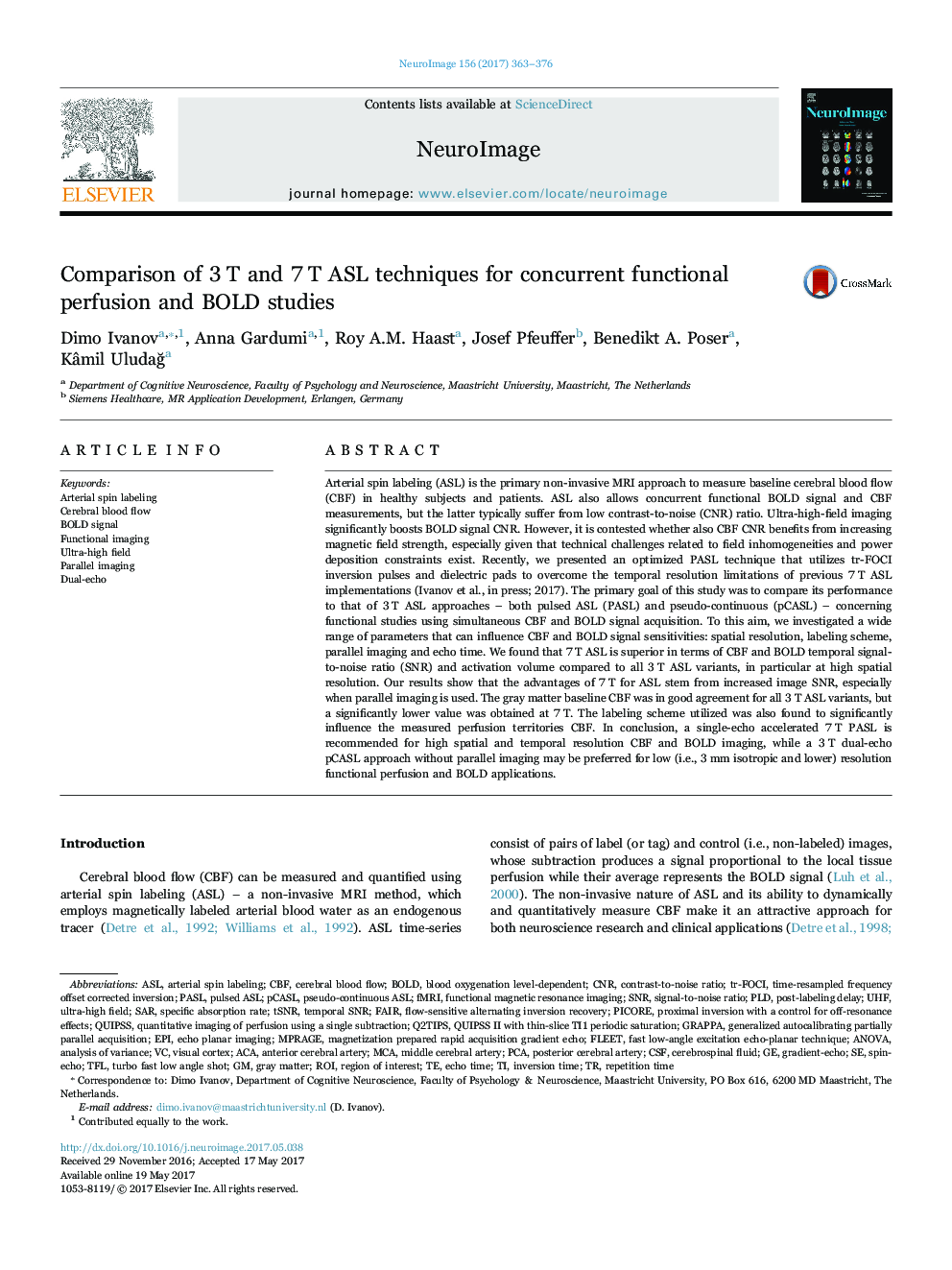| کد مقاله | کد نشریه | سال انتشار | مقاله انگلیسی | نسخه تمام متن |
|---|---|---|---|---|
| 5631034 | 1580854 | 2017 | 14 صفحه PDF | دانلود رایگان |

- 7Â T PASL was compared to PASL and pCASL techniques at 3 T.
- 7Â T ASL outperforms 3T ASL at high spatial resolutions & when parallel imaging is used.
- 7Â T PASL allows high spatial and temporal resolution CBF measurements.
- 3Â T dual-echo pCASL is adequate for low resolution functional CBF and BOLD imaging.
Arterial spin labeling (ASL) is the primary non-invasive MRI approach to measure baseline cerebral blood flow (CBF) in healthy subjects and patients. ASL also allows concurrent functional BOLD signal and CBF measurements, but the latter typically suffer from low contrast-to-noise (CNR) ratio. Ultra-high-field imaging significantly boosts BOLD signal CNR. However, it is contested whether also CBF CNR benefits from increasing magnetic field strength, especially given that technical challenges related to field inhomogeneities and power deposition constraints exist. Recently, we presented an optimized PASL technique that utilizes tr-FOCI inversion pulses and dielectric pads to overcome the temporal resolution limitations of previous 7Â T ASL implementations (Ivanov et al., in press; 2017). The primary goal of this study was to compare its performance to that of 3Â T ASL approaches - both pulsed ASL (PASL) and pseudo-continuous (pCASL) - concerning functional studies using simultaneous CBF and BOLD signal acquisition. To this aim, we investigated a wide range of parameters that can influence CBF and BOLD signal sensitivities: spatial resolution, labeling scheme, parallel imaging and echo time. We found that 7Â T ASL is superior in terms of CBF and BOLD temporal signal-to-noise ratio (SNR) and activation volume compared to all 3Â T ASL variants, in particular at high spatial resolution. Our results show that the advantages of 7Â T for ASL stem from increased image SNR, especially when parallel imaging is used. The gray matter baseline CBF was in good agreement for all 3Â T ASL variants, but a significantly lower value was obtained at 7Â T. The labeling scheme utilized was also found to significantly influence the measured perfusion territories CBF. In conclusion, a single-echo accelerated 7Â T PASL is recommended for high spatial and temporal resolution CBF and BOLD imaging, while a 3Â T dual-echo pCASL approach without parallel imaging may be preferred for low (i.e., 3Â mm isotropic and lower) resolution functional perfusion and BOLD applications.
Journal: NeuroImage - Volume 156, 1 August 2017, Pages 363-376